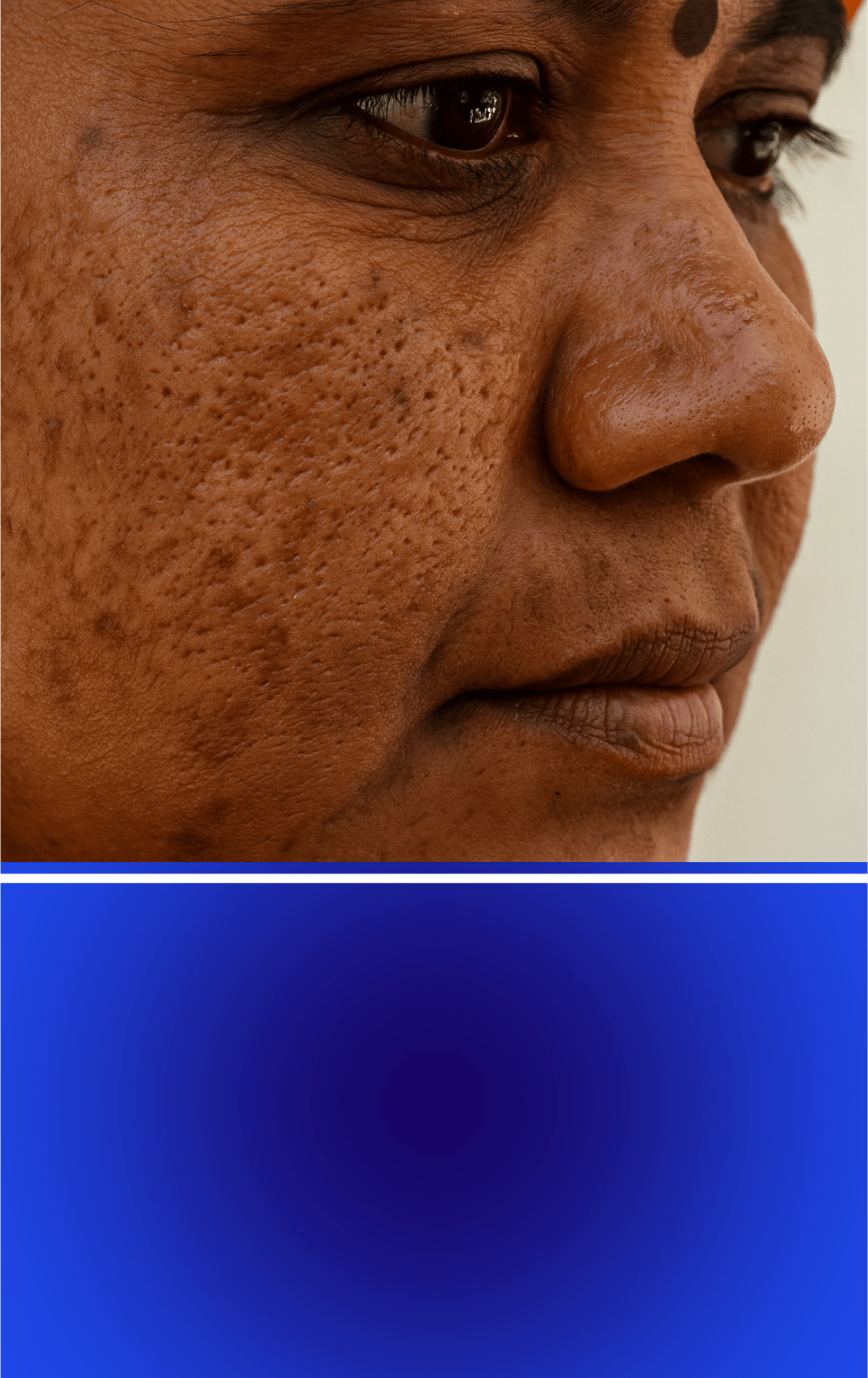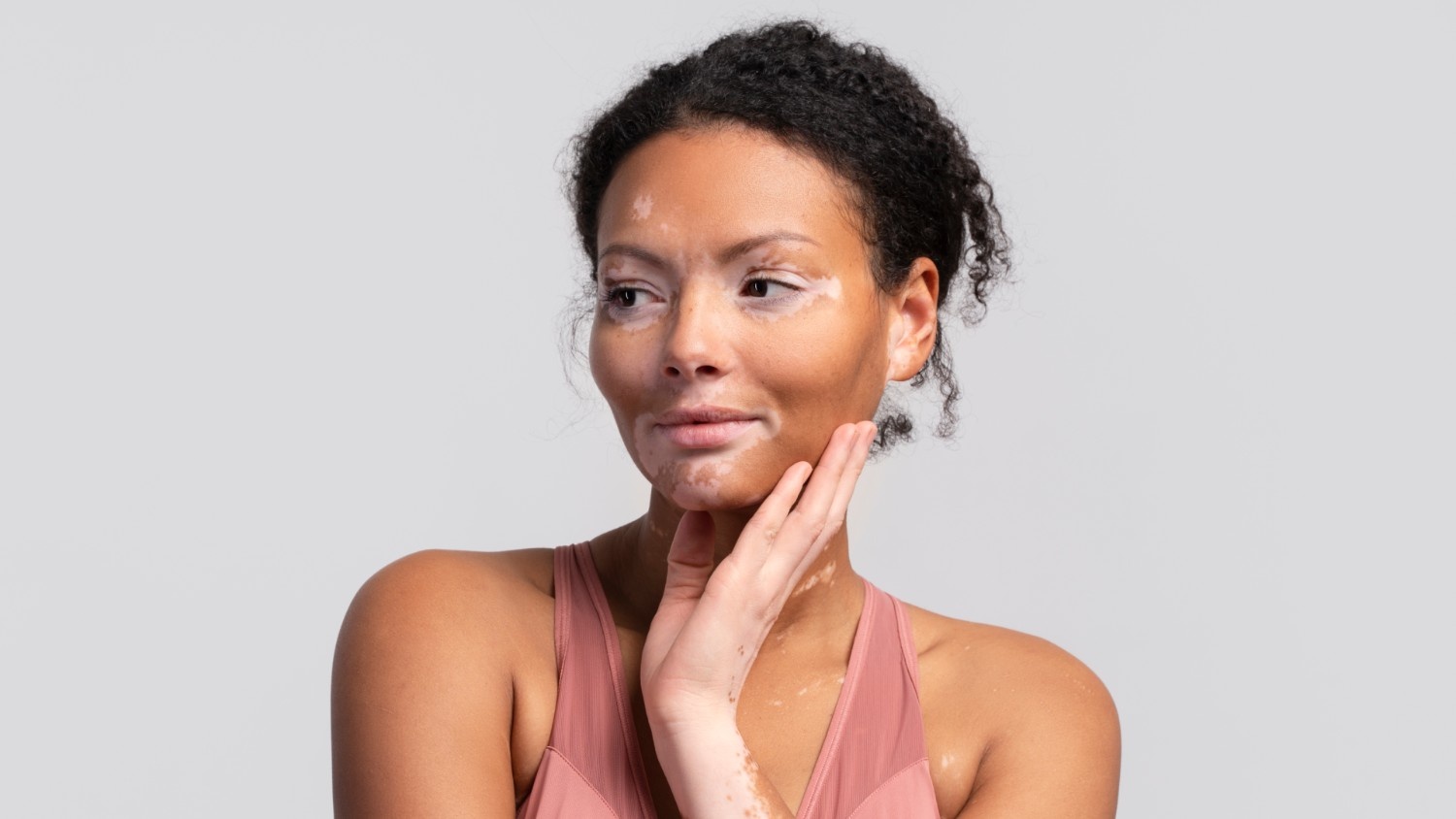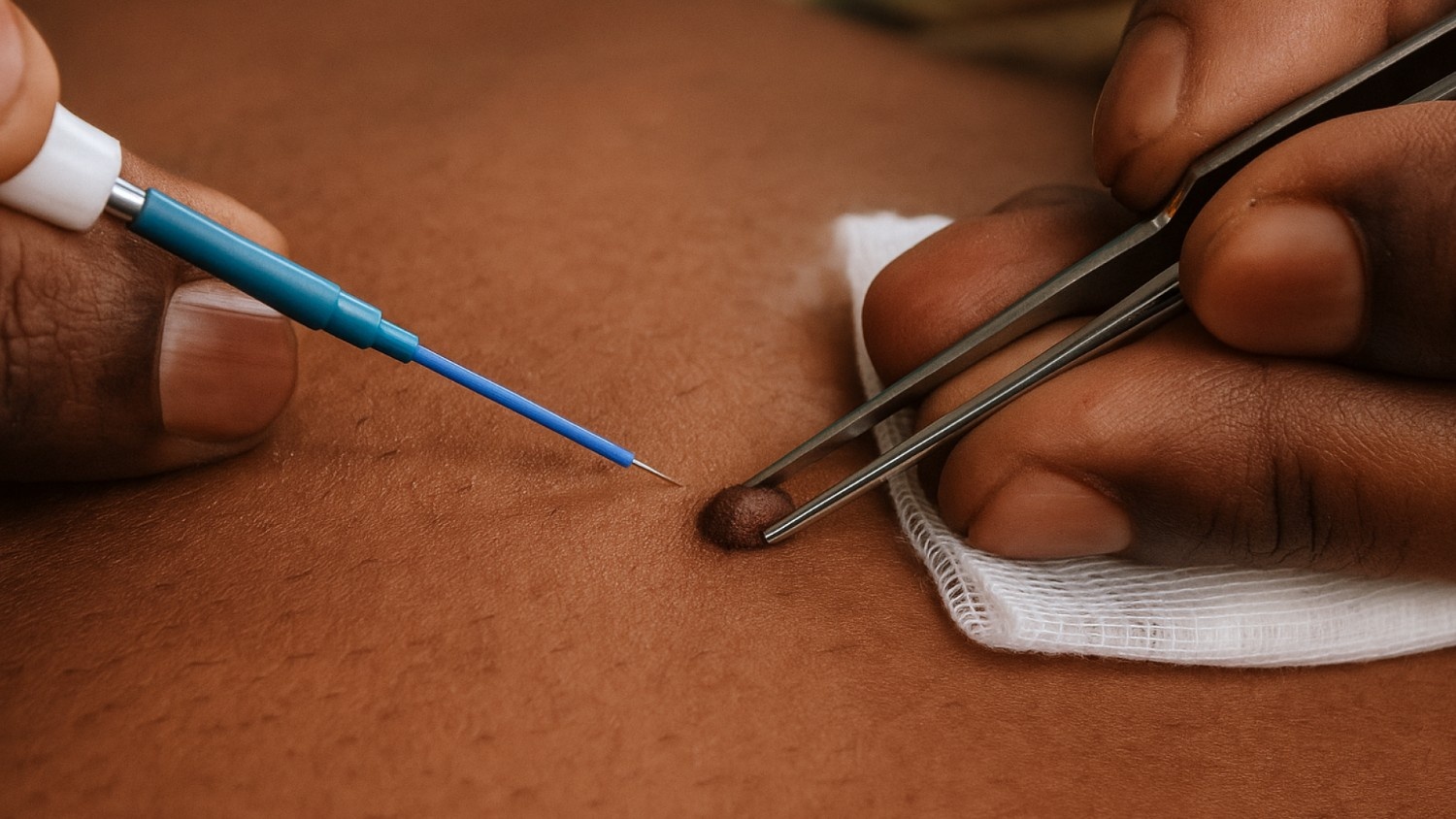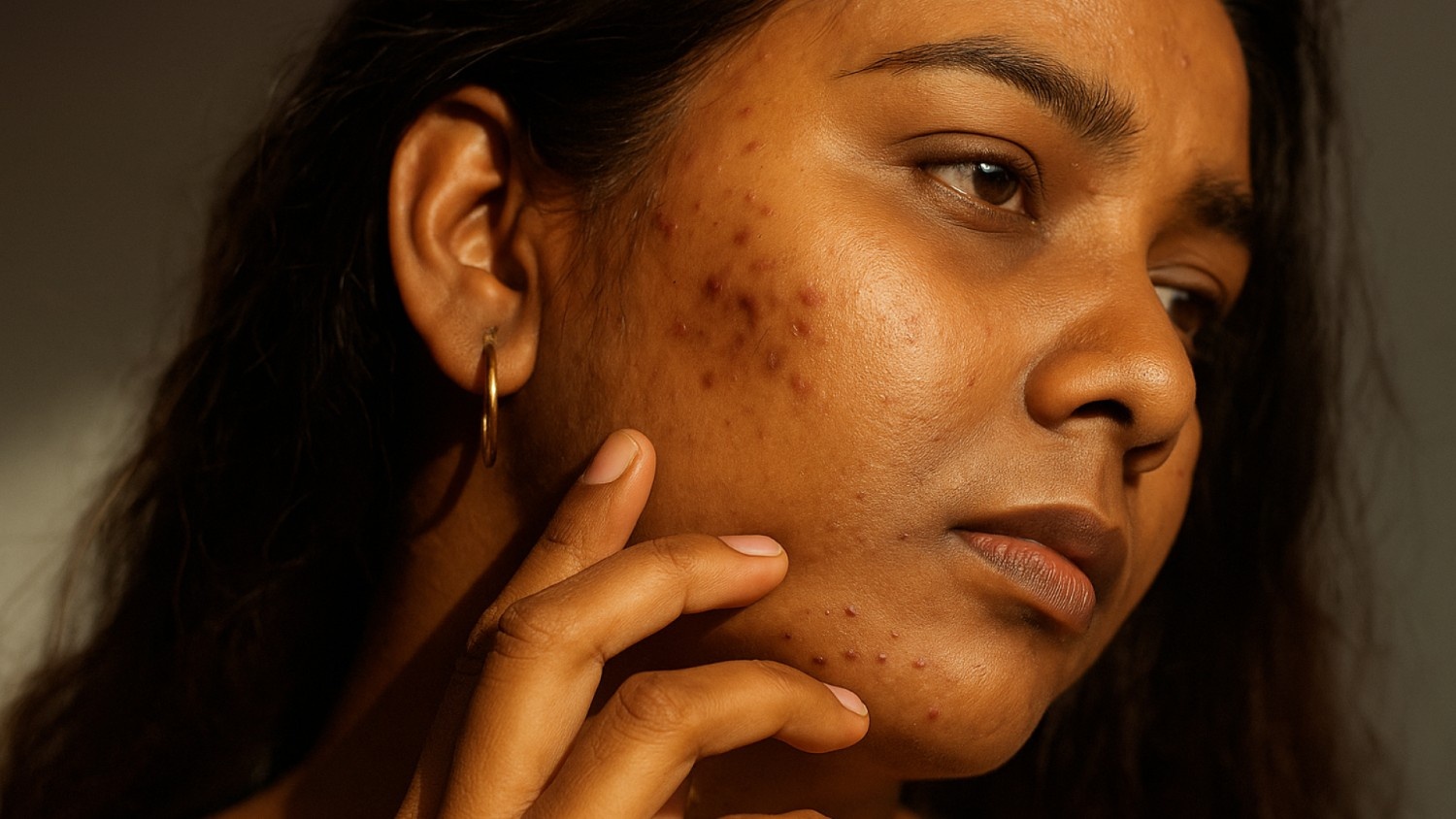If you're dealing with unsightly warts on your hands, feet, or other areas, you're not alone. Warts affect approximately 10–20% of the Indian population, and persistent lesions can significantly impact your comfort and confidence. We understand how bothersome these skin concerns can be, especially in India's humid climate, which often exacerbates the growth of warts.
Cryotherapy is one of the most effective, scientifically supported treatments available. This comprehensive guide provides evidence-based information on cryotherapy for warts, detailing success rates, recovery expectations, and explaining why professional treatment often yields better outcomes than home remedies. Whether you're considering treatment or simply researching your options, this guide delivers clear, medically credible insights.
Overview
- Cryotherapy effectively eliminates warts and the HPV virus through targeted freezing, backed by extensive scientific research.
- The treatment freezes warts with liquid nitrogen, forming a blister that heals over a few weeks with minimal discomfort.
- Dermatologists ensure safe, complete wart removal, outperforming risky and often ineffective DIY methods.
- HPV can remain dormant in skin cells for months before warts appear, making professional treatment essential to prevent recurrence.
- Consulting a dermatologist provides an accurate diagnosis and a tailored plan for the best wart removal results.
Understanding Warts and Why Professional Treatment Matters
Warts are more than just cosmetic concerns, they're viral infections that require proper medical understanding and treatment. Many people in urban areas encounter warts through common transmission routes, yet misconceptions about their treatment persist.
The Science Behind Warts: Human Papillomavirus (HPV) Explained
Warts are caused by the human papillomavirus (HPV), with over 100 different types identified by medical researchers. Common warts typically result from HPV types 1, 2, and 4, while plantar warts on feet are usually caused by HPV types 1, 2, 4, 27, and 57. These viral infections penetrate the skin through microscopic breaks, establishing themselves in the basal layer of the epidermis.
The virus causes rapid cell division, creating the characteristic raised, rough appearance of warts. Unlike other skin conditions, warts contain their own blood supply, which is why they can bleed when damaged. This viral nature explains why warts can spread to other body parts or other people through direct contact or contaminated surfaces.
Medical research shows that HPV can remain dormant in skin cells for months before manifesting as visible warts. This persistence makes professional treatment crucial, as the virus must be eliminated to prevent recurrence.
Why DIY Remedies Often Fail: The Dermatologist Perspective?
Home treatments and over-the-counter solutions often fail to effectively address the underlying viral infection. Many DIY approaches only remove the visible portion of the wart, leaving the viral-infected tissue intact, which can lead to rapid regrowth.
Common home remedies, such as duct tape, vinegar applications, or banana peels, lack scientific evidence for their effectiveness. Worse, improper treatment can cause scarring, secondary bacterial infections, or spread the virus to adjacent skin areas. Professional diagnosis is essential because other skin conditions, such as seborrheic keratoses or skin cancers, can mimic the appearance of warts.
Dermatologists possess the expertise to differentiate between various skin lesions and select the most appropriate treatment modality. This professional assessment ensures both safety and optimal treatment outcomes.
At Velantis, wart treatments are always performed by qualified MD dermatologist following standardised clinical protocols, never by technicians or assistants. We believe in structured, evidence-based care that prioritises your long-term skin health. Schedule your appointment at Velantis today.

The Medical Procedure Explained
Cryotherapy is a leading treatment for wart removal in dermatology. This evidence-based technique delivers consistent results with minimal risk when performed by trained professionals. Its effectiveness comes from its ability to eliminate both wart tissue and underlying viral-infected cells.
What Is Cryotherapy and How Does It Work?
Cryotherapy involves applying liquid nitrogen at -196°C directly to the wart tissue. The extreme cold freezes water inside cells, forming ice crystals that rupture cell membranes and destroy tissue. This freezing not only damages cells but also activates the immune system to target nearby HPV-infected cells, increasing the likelihood of successful treatment. Exposure to such cold causes ice crystals inside and around cells, disrupting their structure and function.
The initial damage is followed by secondary effects such as blood vessel disruption, which halts blood flow, and osmotic stress, which compromises cell integrity. Together, these processes can cause significant tissue damage, affecting both the visible wart and the underlying viral sources.
Research published by the National Centre for Biotechnology Information supports the effectiveness of cryotherapy in achieving complete wart resolution through these combined mechanisms.
The Step-by-Step Cryotherapy Procedure to Treat Warts

Cryotherapy destroys wart tissue by applying extreme cold through repeated freeze-thaw cycles. During these cycles, the wart is frozen, thawed, and frozen again to increase cell damage and reduce blood flow. This method enhances treatment success, especially for tough or thick warts.
Your dermatologist will begin by confirming the diagnosis and evaluating the wart's size, depth, and location. The area is cleaned, and nearby healthy skin is protected. Depending on the type of wart, treatment may involve using cotton swabs for small areas, sprays for broader coverage, or precision probes for targeted application.
Each freezing session lasts approximately 10 to 30 seconds, with multiple freeze-thaw cycles performed as needed. The treated area typically turns white, then red as blood flow returns. A mild stinging or burning sensation is common and usually short-lived.
Expected Physical Response: Blister Formation and Healing
Blister formation, which may be transparent or blood-filled, is a regular part of the predictable healing process that begins with immediate blanching and inflammation within 24 to 48 hours. After 4 to 7 days, the blister or scab will break or dry up and fall off. This blister formation is the intended therapeutic response, indicating successful tissue destruction.
The blister serves as a protective covering while new skin forms underneath. As the healing process progresses, the blister naturally ruptures or dries up, allowing the wart to separate from the surrounding healthy tissue. Multiple treatment sessions are often necessary because deeper wart tissue may require additional freezing cycles to achieve complete elimination.
Ready to Eliminate Warts with Expert Care? Book your cryotherapy session with Velantis Dermatology today and experience safe, effective wart removal customised to your needs. Click here to schedule now.
Effectiveness of Cryotherapy: Evidence-Based Success Rates
Clinical research provides substantial evidence supporting the effectiveness of cryotherapy in removing warts. Understanding these success rates helps set realistic expectations and demonstrates why cryotherapy remains the preferred treatment method among professionals.
Clinical Success Rates and Research Data
Recent clinical studies confirm that cryotherapy remains one of the most effective treatments for common and genital warts, especially when optimised protocols are followed. A 2022 prospective observational study published in the Journal of Cutaneous and Aesthetic Surgery reported an overall cure rate of 77.8% using 10-second freeze cycles applied every two weeks, significantly higher than the 54.3% success rate observed with traditional longer freeze durations (p = 0.026).
Another 2022 study evaluating cryotherapy for hand and foot warts reported a 64.4% success rate, with shorter treatment intervals resulting in faster recovery and improved outcomes.
When it comes to genital warts, a retrospective analysis of 50 women treated with cryotherapy observed a 94% clearance rate, with only 10% experiencing recurrence. Additional studies reported overall success rates ranging from 79% to 88%, depending on the type and location of the wart.
Factors Influencing Treatment Outcomes:
- Wart size: Lesions smaller than 5 mm respond more effectively.
- Duration of presence: Recently formed warts clear faster than older ones.
- Location: Warts on the hands and feet tend to respond well to cryotherapy.
- Immune status: A healthy immune response significantly enhances clearance and reduces the likelihood of recurrence.
Together, these findings reinforce the importance of customised treatment protocols and clinical expertise in achieving optimal outcomes with cryotherapy.
Cryotherapy vs. Alternative Treatments: Comparative Analysis
In one study, cryotherapy successfully treated warts in 60% of participants, while duct tape occlusion therapy had an 85% success rate. However, this single study should be viewed in conjunction with other research that indicates cryotherapy generally performs better in clinical settings.
Professional cryotherapy delivers quicker results than topical acids, lowers the risk of infection compared to surgery, and provides better tolerance than laser therapy, making it a favoured treatment option. Its repeatability allows for treatment adjustments based on individual response patterns.
When comparing cost-effectiveness, cryotherapy's higher initial success rate often results in fewer total treatment sessions, making it economically favourable for most patients.
Realistic Expectations: What Success Looks Like
Complete wart resolution typically takes 2 to 4 weeks after effective treatment, resulting in the full disappearance of the wart and the return of normal skin texture. In some cases, temporary skin discolouration may occur but tends to fade gradually over time. Partial clearance may require additional sessions, especially if initial treatments reduce but do not entirely remove the wart.
Following appropriate treatment intervals improves outcomes and reduces the risk of recurrence. Preventive care plays a key role and includes maintaining good hygiene, avoiding skin-to-skin contact with warts, and supporting immune function through a healthy diet and stress management.
Post-Treatment Recovery: What to Expect and How to Care
Proper post-treatment care is essential for effective healing and patient comfort. Understanding what to expect and how to care for the treated area reduces the risk of complications and supports optimal results.
Immediate Aftercare: First 48 Hours
- Mild to moderate discomfort is familiar, similar to a minor burn.
- Pain typically subsides within three days.
- Keep the area clean and dry; avoid soaking or excessive moisture.
- Begin gently washing the area with fragrance-free soap and water, starting the day after treatment.
- Do not puncture any blisters that form, as this can increase the risk of infection.
Healing Timeline: Week 1 to Week 3
- Week 1: Blisters and scabbing may occur as part of the healing process.
- Weeks 2–3: The scab sheds naturally, and new skin begins to form.
- The area may appear lighter or darker than the surrounding skin for a short time. Normal pigmentation usually returns over time.
- Most patients are fully healed within 7 to 14 days.
Managing Side Effects and Knowing When to Contact Your Doctor

Common side effects of cryotherapy include redness, blistering, tenderness, and temporary changes in skin colour caused by pigment disruption. These reactions are usually mild and often resolve on their own without needing medical intervention. Discomfort can be effectively managed with over-the-counter pain relievers such as paracetamol or ibuprofen. To promote proper healing, avoid scratching or irritating the treated area and protect it from direct sun exposure.
Contact your dermatologist if you notice increasing redness or swelling, pus or foul-smelling discharge, warmth, or red streaks around the area. When proper aftercare is followed, scarring is rare, and the skin typically returns to normal within a few weeks.
Need Guidance on Post-Treatment Care? Contact Velantis Dermatology for expert aftercare advice and to ensure a smooth recovery process. Reach out to our team today.
Safety Profile and Risk Assessment
Cryotherapy maintains an excellent safety record when performed by qualified dermatologists. Understanding potential risks helps patients make informed treatment decisions and recognise when medical attention is needed.
Common Side Effects and Risk Factors
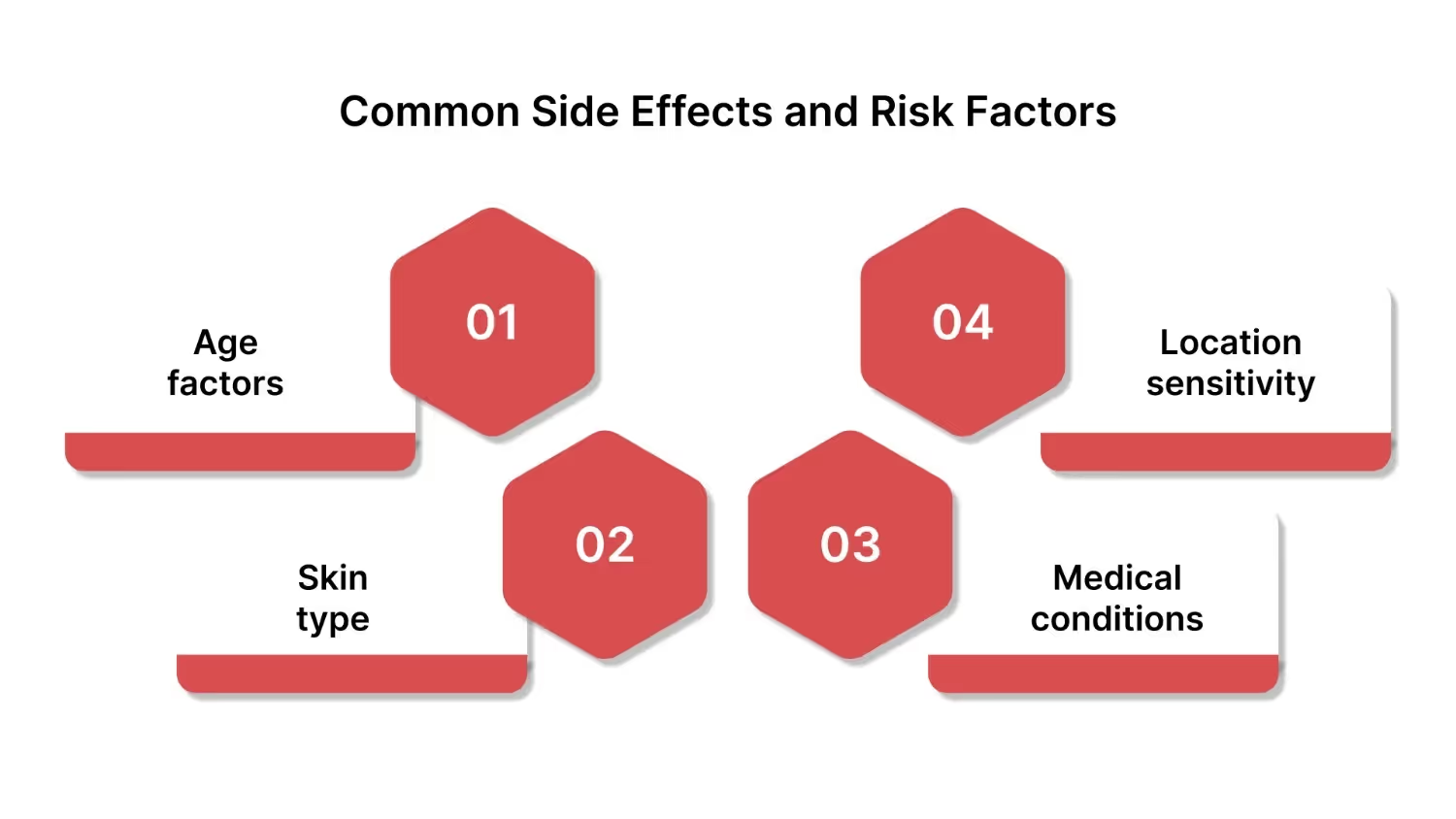
The most frequent side effects include temporary pain, blister formation, and mild skin discolouration. These effects are expected parts of the healing process rather than complications. More significant risks include infection (rare with proper care), permanent skin colour changes (more common in darker skin types), and nerve damage (extremely rare when proper techniques are used). Patient-specific considerations include:
- Age factors: Children may require modified approaches for comfort
- Skin type: Darker skin has a higher risk of pigmentation changes
- Medical conditions: Diabetes, immunosuppression, or circulation problems require special precautions
- Location sensitivity: Facial treatments need more conservative approaches
When Professional Consultation Is Essential
Seek immediate medical attention if you develop signs of infection, experience severe or worsening pain beyond the expected timeline, or notice unusual changes in the treated area. Pregnant women should discuss treatment timing with their dermatologist, as some considerations may affect treatment planning.
Professional follow-up ensures proper healing assessment and determines if additional treatments are necessary for optimal results.
Alternative Treatments: When to Consider Other Options
While cryotherapy for warts remains highly effective, certain situations may warrant alternative approaches. Understanding these options helps ensure the most appropriate treatment selection for individual circumstances.
Medical Alternatives and Combination Approaches
Topical immunomodulators, such as imiquimod, can be effective for certain wart types, particularly when immune system stimulation is beneficial. Surgical excision may be considered for extensive warts or those resistant to multiple cryotherapy sessions. Laser therapy offers precision for sensitive locations but typically costs more than cryotherapy.
Combination therapy approaches include:
- Cryotherapy followed by topical treatments for enhanced effectiveness
- Sequential protocols using different modalities based on response patterns
- Immune system support in conjunction with primary therapy for optimal outcomes.
Home treatment options should be discussed with your dermatologist before implementation. Over-the-counter cryotherapy kits offer limited effectiveness compared to professional treatment and carry a higher risk of improper application.
Making an Informed Decision: Consultation and Treatment Planning
A professional dermatological consultation ensures an accurate diagnosis and optimal treatment selection. During your consultation, you can expect a comprehensive skin assessment, a discussion of treatment options, and realistic expectations for the timeline.
Velantis Dermatology offers expert-led wart removal consultations, focusing on precision and safety. Their team of board-certified dermatologists uses advanced tools and personalised protocols tailored to each patient. Whether you're considering cryotherapy or exploring alternative treatments, Velantis provides clarity through diagnostic accuracy and transparent guidance.
Essential questions to ask your dermatologist:
- What's the expected success probability for my specific case?
- How many treatment sessions might be needed?
- What are the alternatives if cryotherapy doesn't work?
- What should I expect during recovery?
- How can I prevent wart recurrence?
At Velantis Dermatology, these questions are proactively addressed as part of a thorough treatment plan. Their approach takes into account your wart type, skin condition, medical history, and lifestyle. With access to advanced cryotherapy, laser procedures, and combination treatments, Velantis ensures each patient receives an optimised balance between treatment effectiveness and recovery time. Their patient-first philosophy supports informed decision-making and long-term results.
Conclusion
Cryotherapy for warts is an evidence-based, highly effective treatment with success rates up to 65.5%, depending on wart type and protocol, and it outperforms most home remedies and OTC options.
The procedure's safety profile, combined with predictable healing timelines and low complication rates, makes it an excellent choice for individuals seeking a reliable option for wart removal. Professional dermatological care ensures proper diagnosis, optimal treatment selection, and comprehensive aftercare guidance.
If you're experiencing concerns related to warts, don't let misconceptions or ineffective home treatments delay proper care. Cryotherapy for warts represents decades of medical advancements in dermatological treatment, offering you the best chance for complete and permanent resolution of warts.
Clear Your Skin with Expert Wart Removal at Velantis Dermatology. Take charge of your skin health with safe, effective cryotherapy. Contact Velantis Dermatology in Chennai today for personalised care and lasting results. Book your consultation now.
FAQs
Q1. Why is cryotherapy an effective therapy for warts?
A1. Cryotherapy uses liquid nitrogen to freeze and destroy wart tissue and the underlying HPV virus. The extreme cold ruptures cell membranes and triggers an immune response, effectively eliminating the infection.
Q2. How does cryotherapy work for removing warts?
A2. Liquid nitrogen is applied to the wart, freezing it at -196°C. This forms ice crystals that destroy wart cells, leading to blister formation. As the blister heals, the wart sheds, typically within 1-2 weeks.
Q3: What are the success rates of cryotherapy for wart removal?
A3. Clinical studies show success rates of 60-94%, depending on wart type and treatment protocol. Smaller, newer warts on hands or feet often respond best.
Q4. Is cryotherapy painful, and how long does the pain last?
A4. Patients may feel a brief sting or burning during treatment, similar to a bee sting. Mild discomfort typically lasts 1-3 days and is manageable with over-the-counter pain relievers.
Q5. How many sessions of cryotherapy are typically needed to remove a wart?
A5. Most warts resolve in 1-3 sessions, spaced 1-3 weeks apart, depending on size, location, and immune response. Your dermatologist will assess progress.
Q6. Are there any side effects or risks associated with cryotherapy for warts?
A6. Common side effects include temporary pain, blisters, and mild skin discolouration. Rare risks, such as infection or permanent skin changes, are minimised with professional care.
Q7. What should I do if my warts don't go away after several cryotherapy sessions?
A7. Consult your dermatologist to determine if additional sessions or alternative treatments, such as topical immunomodulators or laser therapy, are necessary.
Q8. How can I ensure my cryotherapy treatment is being done correctly?
A8. Choose a qualified dermatologist, ask about the procedure and expected outcomes, and communicate openly about progress to ensure proper treatment protocols.
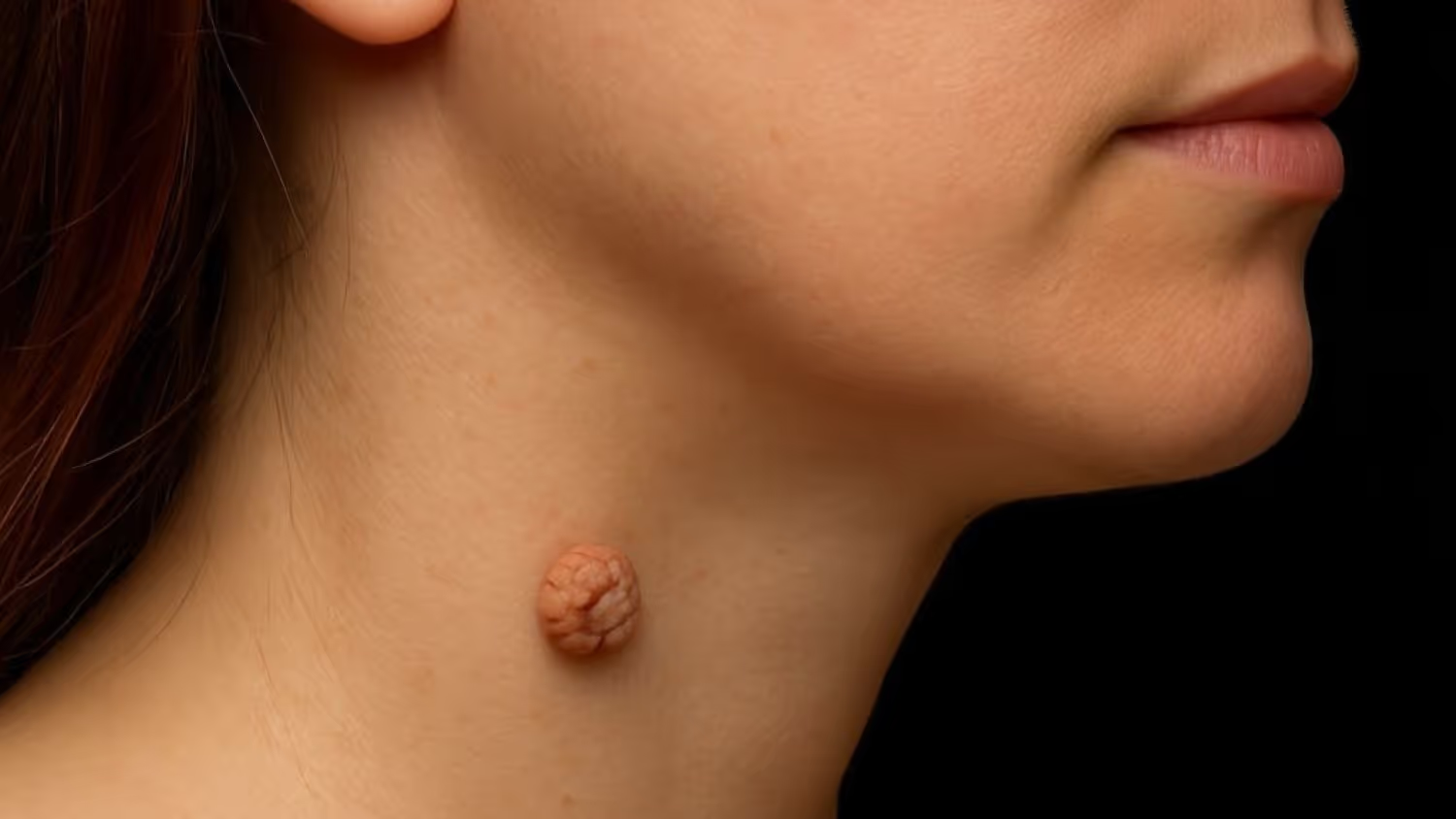

.png)
